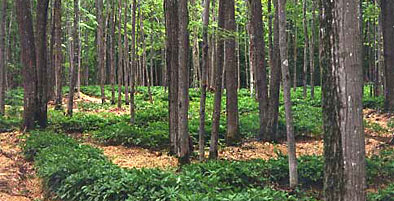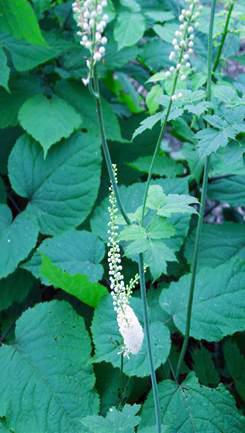The two practices may produce the same products, but key differences exist between them. Forest farming is more sedentary in that it is practiced through deliberate cultivation under an established forest canopy. It requires planning, inputs, and farming activities like tilling, planting, and management. Wild crafting is more nomadic, requiring the wild crafter to search through the forest for the desired product. Consequently, finding the product, as well as the quantity of the product, is not guaranteed.
The inputs required …

 Botanical Information
Botanical Information